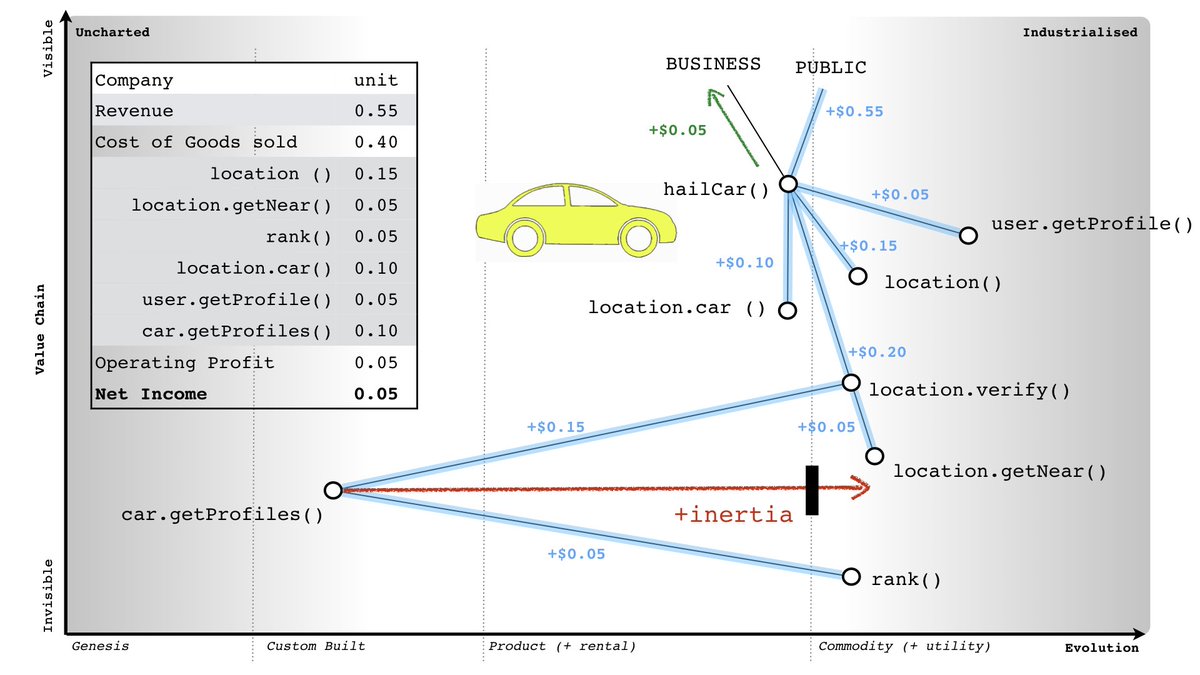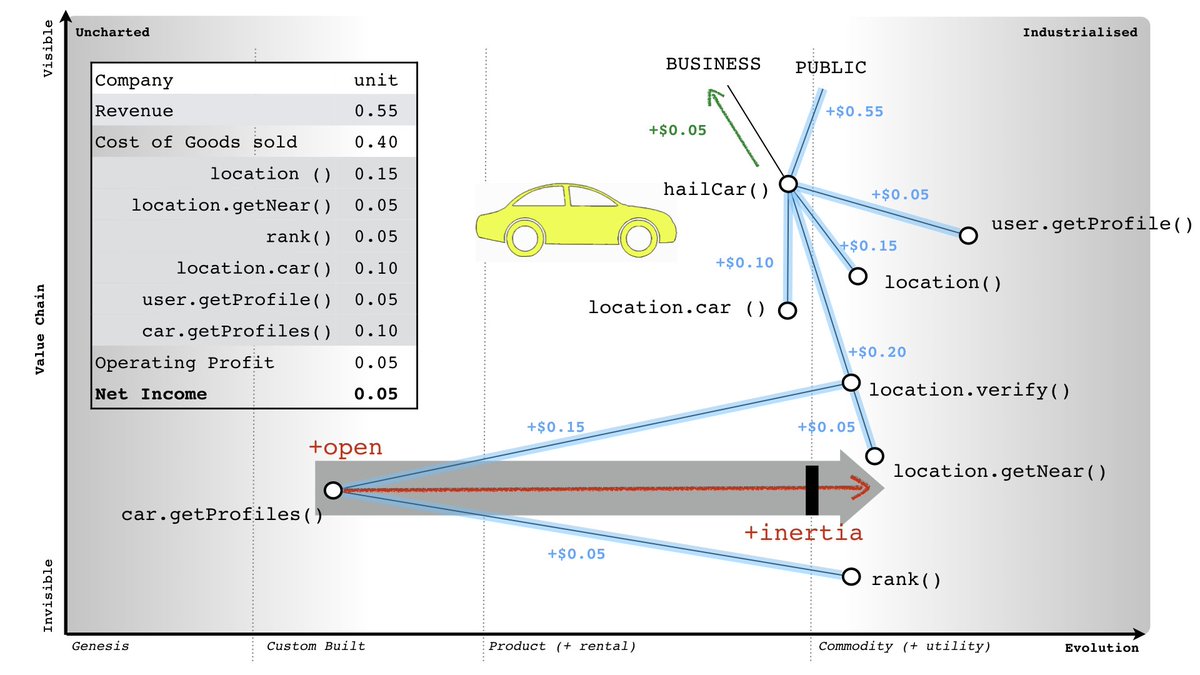X : Can you really calculate capital flow in applications?
Me : We're getting there. Ask @simalexan
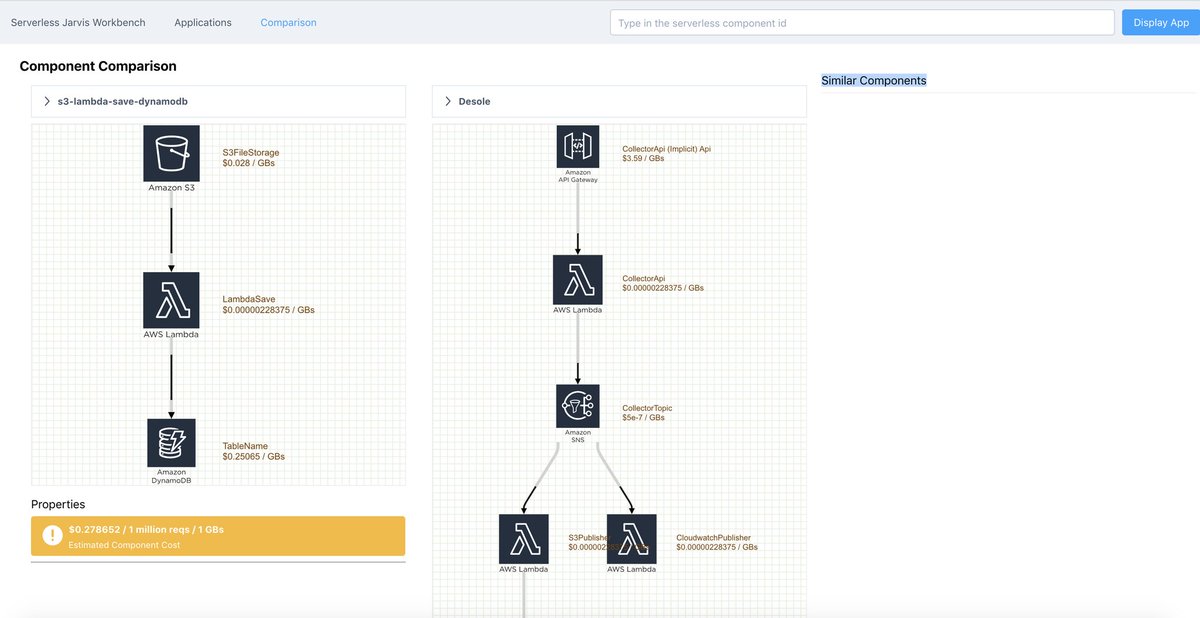
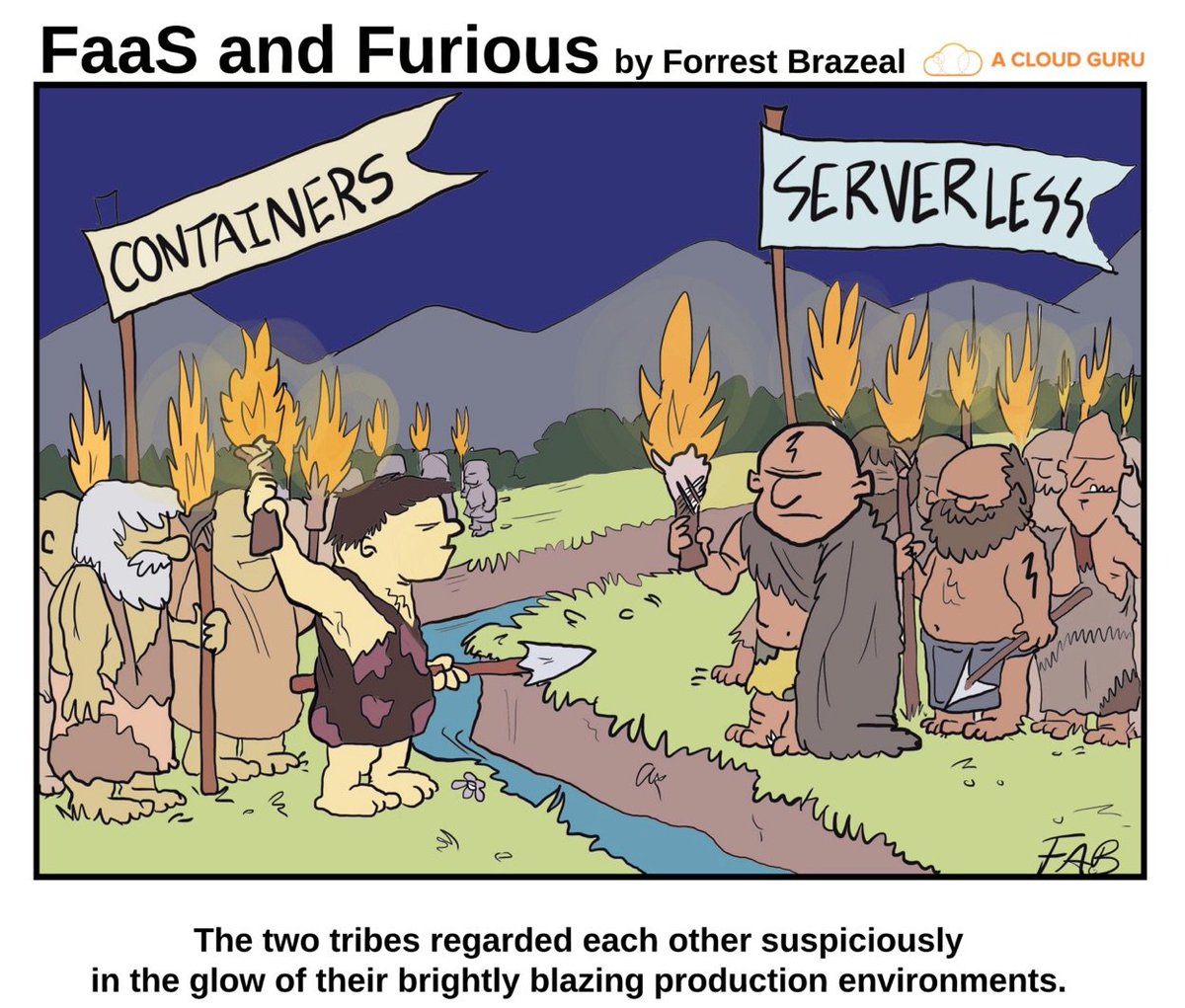
Me : Did I say something about this being a rough analogy with me making lots of assumptions and taking liberties?
X : Yes
Me : Ok then. I'm simply pointing the way, not giving you a fully worked example.
Me : For some, they'll be doing this in a few years. Others will take 15-20 years or possibly simply disappear in a puff of bankruptcy as they are both outpaced and their cost efficiency is just too low.
Me : Any which have technology ... in other words, almost everyone. Even Lawyers - go talk to @mengwong on that front.
Me : We can talk about all the other connected services, operational parameters, our history with lock-in, second sourcing etc but I won't, I'll keep it simple.
Portability is a nice to have. Billing per function changes the world.
Me : Voice (conversational programming), maps and capital flow.
X : Then why are so many enterprises investing in containers?
Me : I mostly assume it's executives with an eye on retirement and no eyes on the landscape.
Me : The evolution axis is not a diffusion curve but it can contain many. This was a rabbit hole I went down over a decade ago. See the section on "The trouble with maps" - medium.com/wardleymaps/fi…
Me : It was a Framework as a Service. It was a code execution environment in which you built entire applications online (front and back-end) in Javascript with billing to the function, auto-magic exposing of functions as APIs etc in 2005/06 ...
X : What happened to it?
Me : Shutdown in 2007. Parent company believed the future was 3D TV and not cloud, 3d printing or mobiles phones as cameras.
Me : No, that's hindsight. Oh, and using big and expensive US strategy consultants - that's daft. That's always daft.
Me : All over the place but if you're looking for pockets of solid skill then try World of Warcraft, Open source and the Military.
X : How about MBAs?
Me : Sure, if they're involved in World of Warcraft, Open source or the Military.
Me : Yes ... gut feel, magic thinking and secrets of success. Personally, I prefer to start with situational awareness and then move onto communication, learning and challenge.
Me : I've helped map from the UN vision to reduce global poverty to individual missions under that to the components needed. Also don't get me started on culture unless you have a map in hand.
Me : I guess I just like to look before leaping, shooting a rifle, committing troops to a battlefield etc. I do find that looking at an environment before making a decision is quite useful whether driving a car or government policy.
Me : No idea. On the surface, then looking at the agreement gives me a sinking feeling that they used lots of MBAs and expensive US strategy consultants. I do hope this is all state craft.
Me : Beyond @adrianco and all the commercial uses of maps or @liammax and others saving millions / billions in Gov or @VirtualTal writing a book (soon to be film) ... oh, the best has to be @GoAgileGov using maps to save lives.
Me : Oh, I can guarantee you that every map is imperfect. This is actually a necessity in order to be useful. Maps simply show you a perspective of the landscape, they are not the territory itself.
Me : Hey, it took the idea of geographical maps over two thousand years to become popular. We've only been doing this in business for 13 years. Give it another 20-30 years at least. Jeez. Don't be in such a rush.
Me : Gosh. You need maps to implement PST effectively - hackernoon.com/designing-for-… .... but for heaven's sake don't start with PST. You need to get the basics of doctrine sorted first.
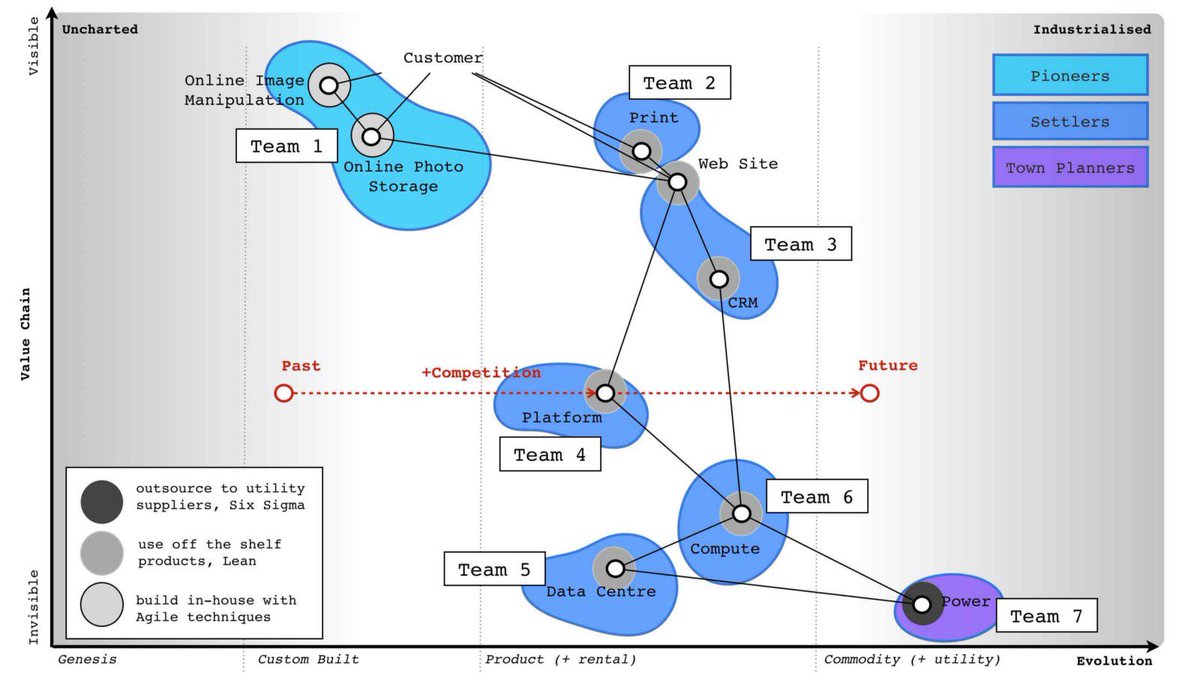
Me : Hmmm. I did warn people back in 2014, I assume that some are now discovering the warfare / mess that bimodal should create - blog.gardeviance.org/2014/11/bimoda… ... not a sensible idea, never was. Don't mess with org changes unless you really know this stuff.
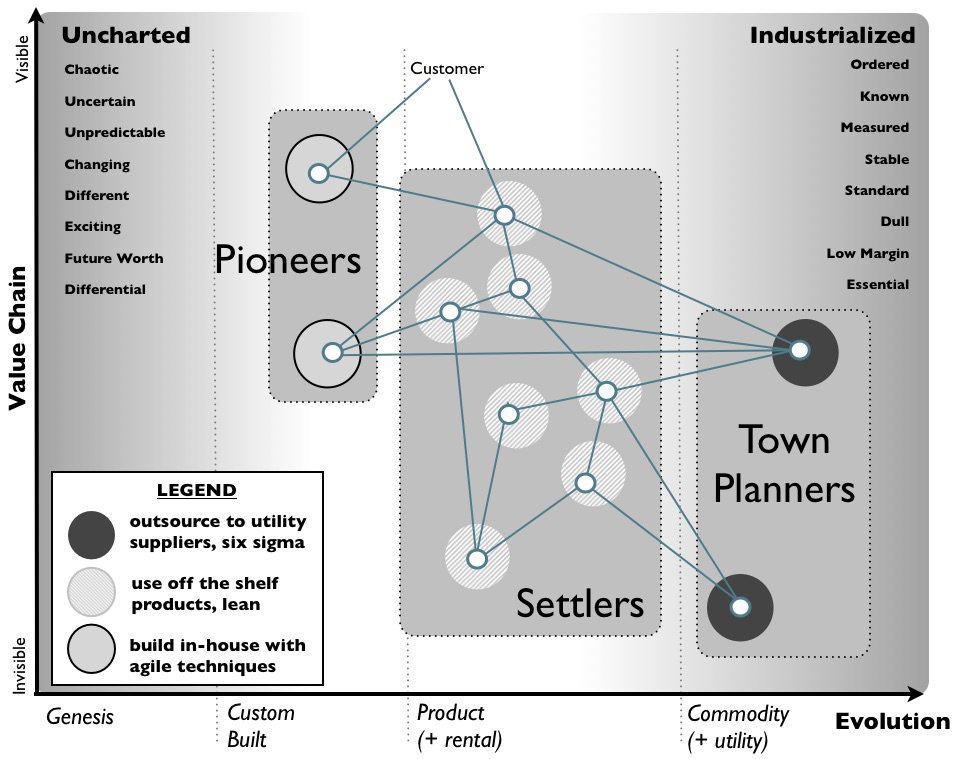
Me : Toxic IT? The stuff that we custom build that long ago became replaced by more commodity like items?
X : It's not toxic, it performs an essential business function.
Me : It might be essential but it is killing the organisation.
Me : Oh yes, annoying startups like - FICO, Pepsi, Nordstrom, Fannie Mae, Capital One etc. Give it a rest, go and hug your server, retire in a few years and let some other poor sod fix your mess.
Me : Yes ... you have fewer users, less geographic reach, less of an inventory, less scale, less bandwidth, poorer uptime, docile competitors and most importantly, a much higher willingness to do nothing major whilst retirement approaches.
Me : Amazon is having failures continuously from machines upwards. We don't notice. What you're asking is what happens if Amazon, one of the largest (soon to be largest) company in the world with strong revenue and profitability fails ...






